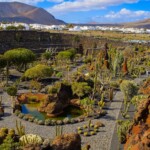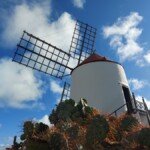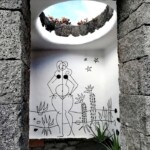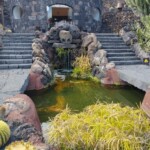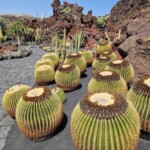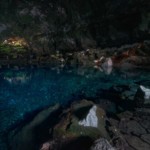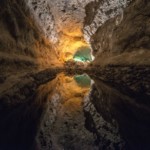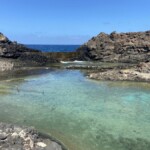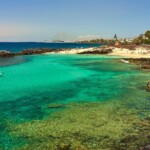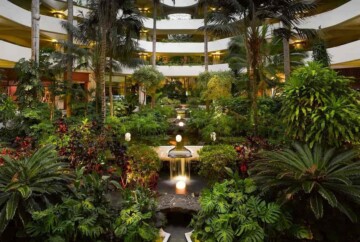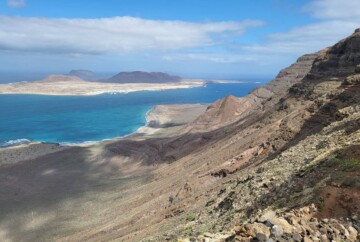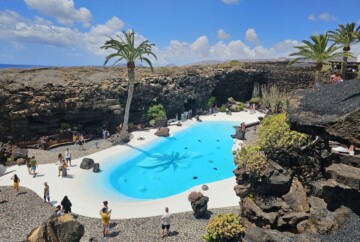When traveling abroad, get a policy from one of the best travel insurance companies. You can get a 5% discount on Heymondo, the only insurance that pays all medical bills upfront for you, HERE!
The Cactus Garden in Lanzarote is a unique attraction with one of the most significant cactus collections in the world. With an impressive 4,500 specimens representing over 500 species, it’s a must-visit in Lanzarote.
Before delving into this guide, it’s essential to note that this is the last creation of Cesar Manrique in Lanzarote, so it holds significant importance among the island’s residents.
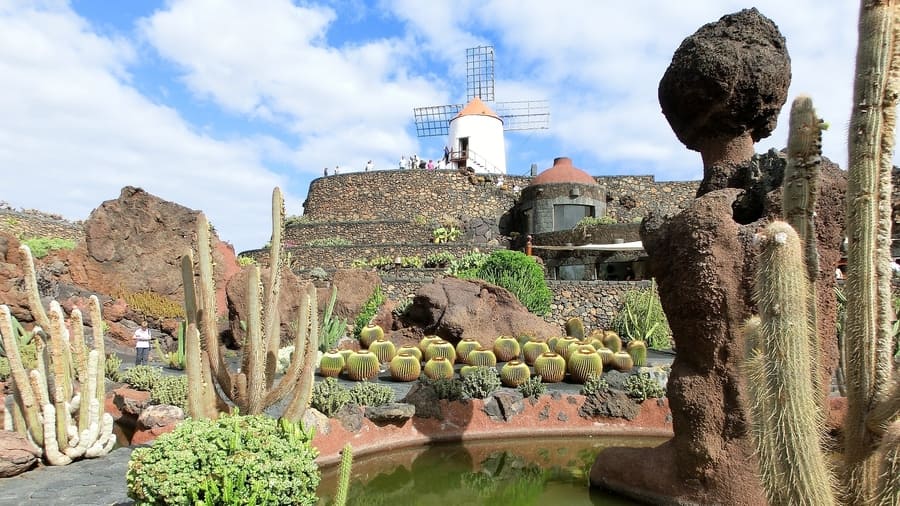
Cactus Garden in Lanzarote – Tickets & Opening Times
The artist’s fundamental principle in his projects remained constant: to enhance the original beauty of Canarian landscapes and integrate them into their natural environment, blending elements of architecture, art, and landscaping. In this instance, Manrique transformed an old abandoned volcanic sand quarry into the renowned Jardín de Cactus, solidifying its status as one of the most important tourist attractions in Lanzarote.
Guide to visiting the Cactus Garden in Lanzarote
If you are traveling to Lanzarote, here’s everything you need to know to plan your visit to the Jardin de Cactus in Lanzarote – from what to see and where it’s located to purchasing tickets and some handy tips and recommendations.
Here’s a quick overview of what we’ll discuss:
- What to see in the Jardín de Cactus
- Cactus Garden hours
- Cactus Garden tickets
- How to get to the Jardín de Cactus
- Best hotels near the Cactus Garden
- Best things to do near the Lanzarote Cactus Garden
What to see in the Jardín de Cactus, Lanzarote
As I mentioned before, in the Cactus Garden, you’ll encounter a diverse array of cacti from five continents, carefully curated by the botanical expert Estanislao González Ferrer.
While these resilient plants may share a resemblance at first glance, we were fascinated by their individuality and unique characteristics. An interesting fact: most of these plants are sourced from America, Morocco, Madagascar, and the Canary Islands.
The first cactus in the Cactus Garden
The first cactus at the Cactus Garden entrance warmly welcomes visitors and stands proud at 23 feet tall. It’s a Euphorbia Candelabrum from Africa, planted by Cesar Manrique in 1989. This beautiful plant is a star attraction, enticing everyone to capture a memorable photo beside it.
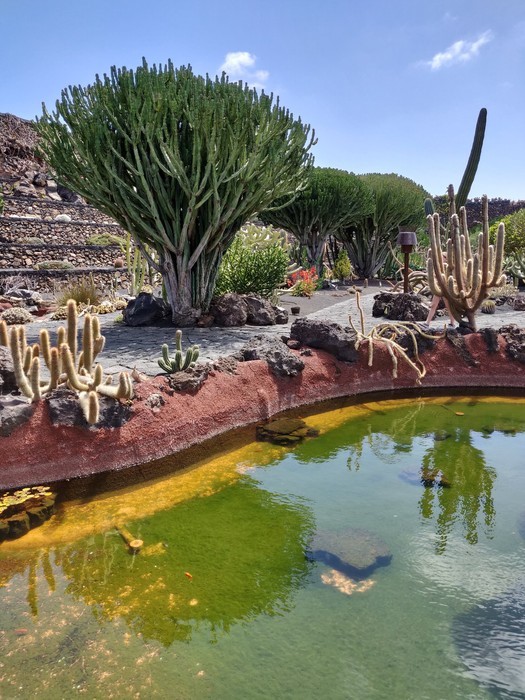
The first cactus in the Cactus Garden
The “Cojines de Suegra”
Along the trails, you will find a group of 20 Mexican cacti known as “Cojines de Suegra” (“Mother-in-law’s cushions”). With their low height and circular shape, these charming plants resemble cushions – hence the name!
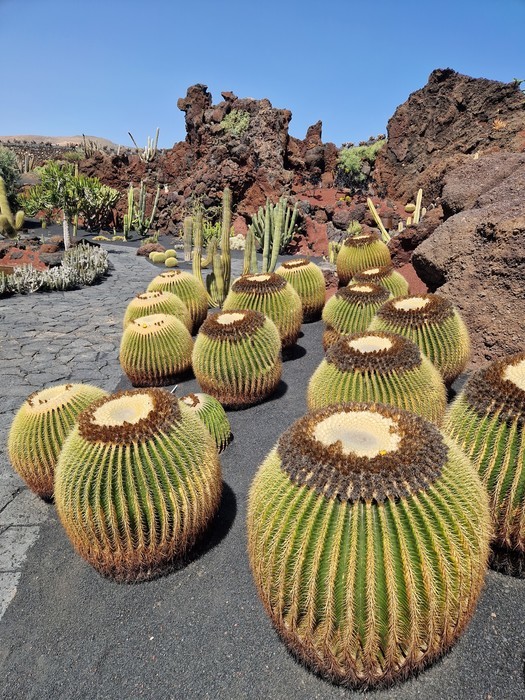
The “Cojines de Suegra”
The pond
The pond hosts a diverse array of orange fish, water lilies, and a charismatic sculpture. It is situated in the garden’s central area, near the entrance arch, so you can easily spot it as soon as you enter.
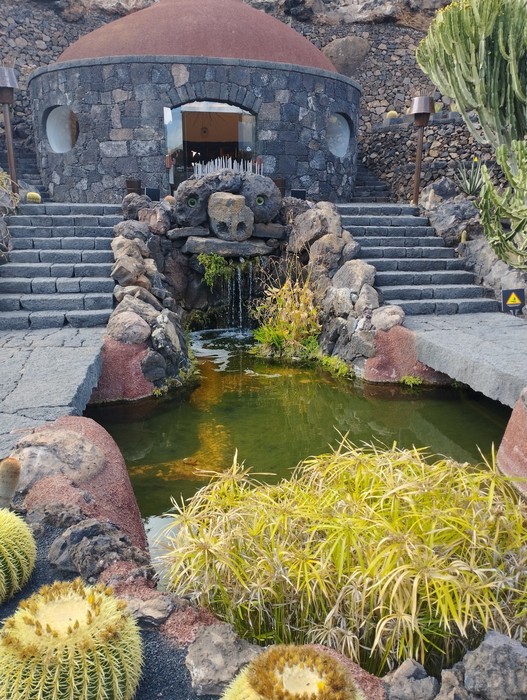
The pond
Cesar Manrique’s murals
Cesar Manrique’s murals are a highlight of your visit to the Jardín de Cactus. You will find some of his drawings near the bathroom entrances, depicted in the photo below, and encounter a larger mural adorning the cafeteria walls.
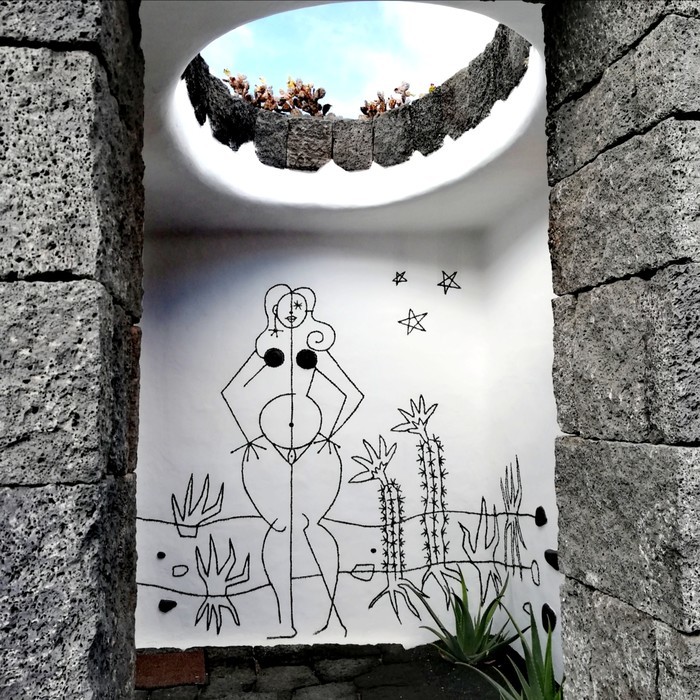
Cesar Manrique’s murals
The mill
Standing as a guardian from above, the millet mill is one of the island’s last preserved mills. You can explore both its exterior and interior to understand the 19th-century mechanism used for grain grinding. This historical site played a crucial role in producing gofio, an essential component of traditional Canarian gastronomy.
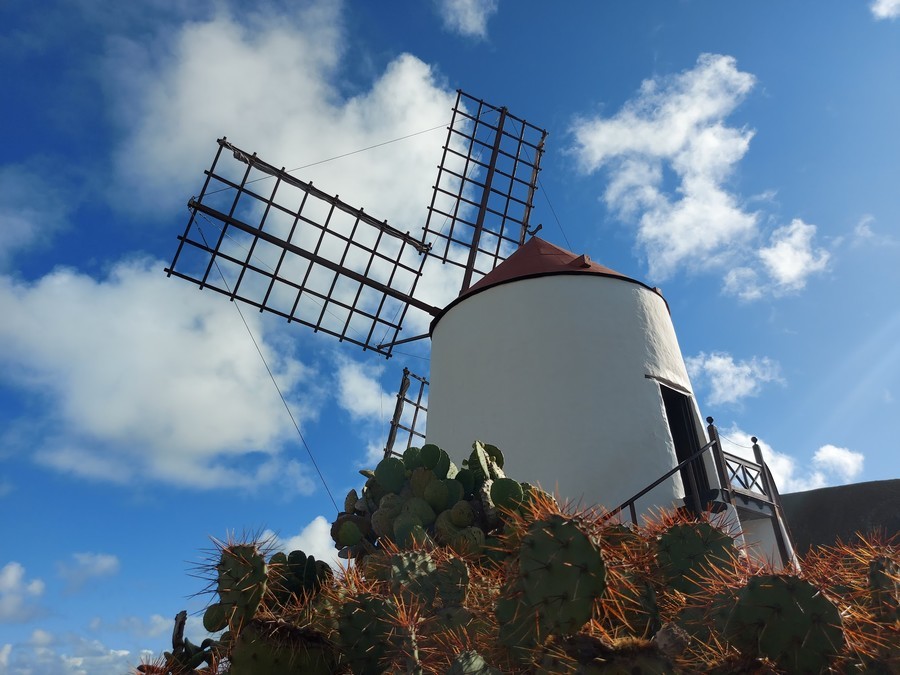
The mill
You can even climb to the top for panoramic vistas of the Cactus Garden.
The restaurant
If you visit this attraction in the morning, consider having lunch at the Cactus Garden Restaurant. Here, you can enjoy a delicious local menu while admiring panoramic views of the unique garden with its combination of red, green, and ochre shades.
The menu features standout dishes like wrinkled potatoes with mojo and local goat cheese. Additionally, there are more elaborate options, such as honeyed prickly pear croquettes or chicken and cactus rolls. One dish that particularly caught my attention was the exquisite vegetarian cactus, millet, and potato burger. It was pretty amazing!
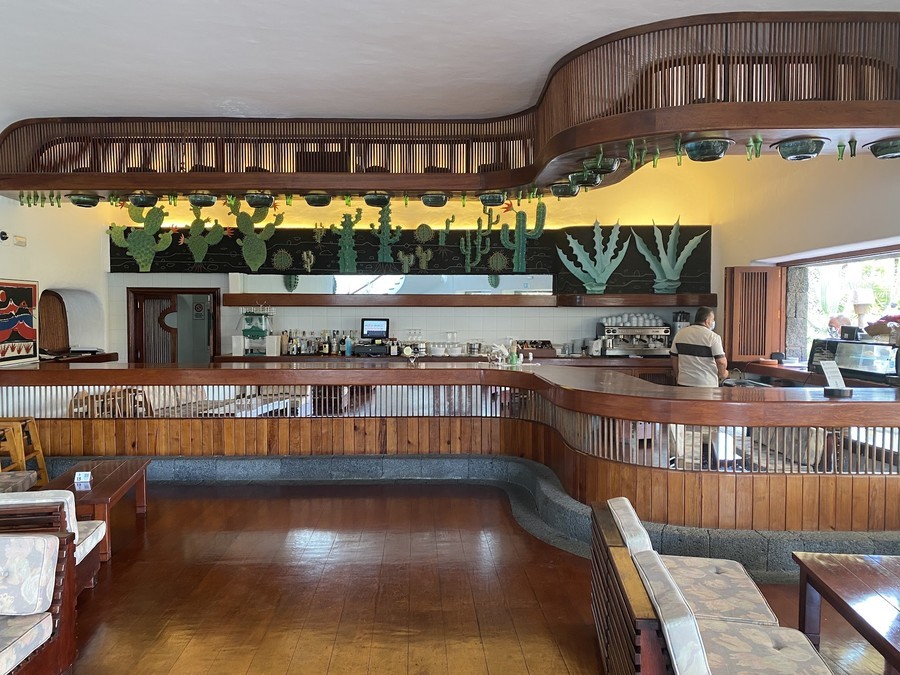
The restaurant
If you prefer something lighter, the restaurant offers a cafeteria and a bar where you can enjoy a soft drink or snack, recharging your energy to continue your tour.
Even if you’re not in the mood for anything specific, make sure to at least go inside the restaurant. It houses some must-see works of art by Cesar Manrique, including the super colorful and symbolic mural and a unique lamp with special lighting crafted from different shapes of prickly pear leaves.
Wind Toy: Guatiza
Cesar Manrique’s Wind Toys are among my favorite works by the artist. This collection of sculptures features original structures and striking colors, cleverly mimicking windmills—an iconic symbol of Canarian culture.
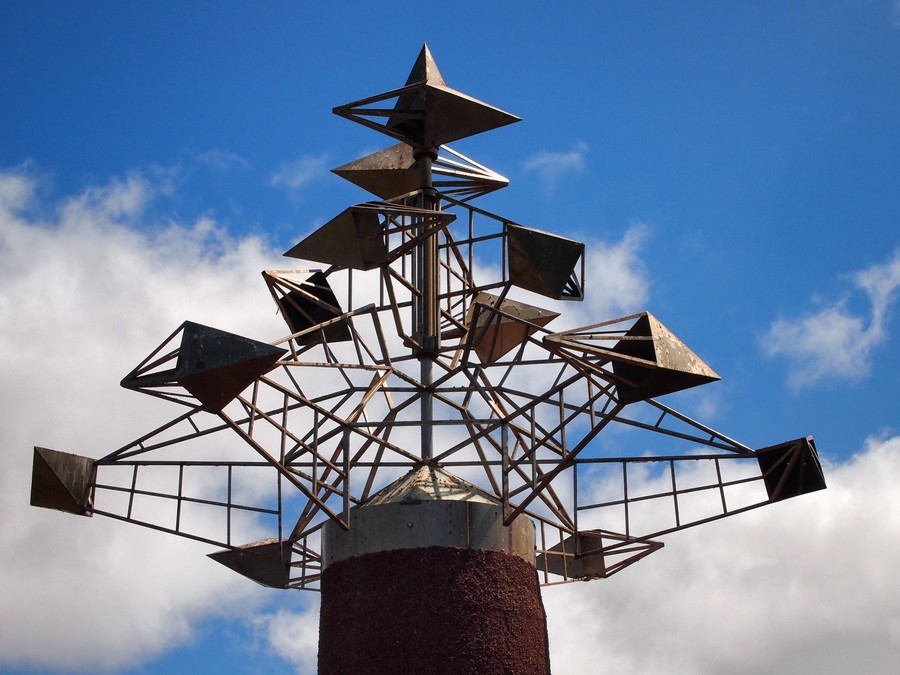
Wind Toy: Guatiza
Keep an eye out for one of these captivating Wind Toys located above the circular cafeteria within the Cactus Garden.
Cactus Garden hours
Lanzarote’s Jardin de Cactus welcomes visitors every day from 10:00 a.m. to 5:00 p.m. Please note that the last admission is at 4:30 p.m., so it’s crucial to factor this in when planning your visit.
In addition, consider joining the “Insólita Experience,” which takes place every Wednesday and Friday at 9:30 a.m. This unique guided tour is reserved for small groups and takes place outside of regular hours, offering an exclusive opportunity to explore the garden. The experience also includes an aperitif featuring local products and wines from the La Geria wineries.
Cactus Garden tickets
Tickets to the Lanzarote Cactus Garden are priced at €6.50 for adults and €3.25 for children aged 7 to 12. While tickets can be purchased directly at the box office, I highly recommend buying your tickets online in advance. This not only helps you avoid potential queues but also ensures you make the most of your time in the garden.
If you are interested in the exclusive “Insólita Experience” on Wednesdays or Fridays, admission is €30 for adults and €15 for children.
How to get to the Jardín de Cactus
There are several ways to get to the Cactus Garden in Lanzarote. Depending on your budget and preferred means of transportation, here are the best options:
How to get to the Cactus Garden by car
Renting a car in Lanzarote is a convenient way to explore the island. With well-maintained and well-marked roads, you can plan your trip freely and at your own pace. This means you can stay at each of the attractions for as long as you want without the constraints of an organized tour itinerary or the schedules of public transport. We always use DiscoverCars, which offers clear contract conditions and competitive prices.
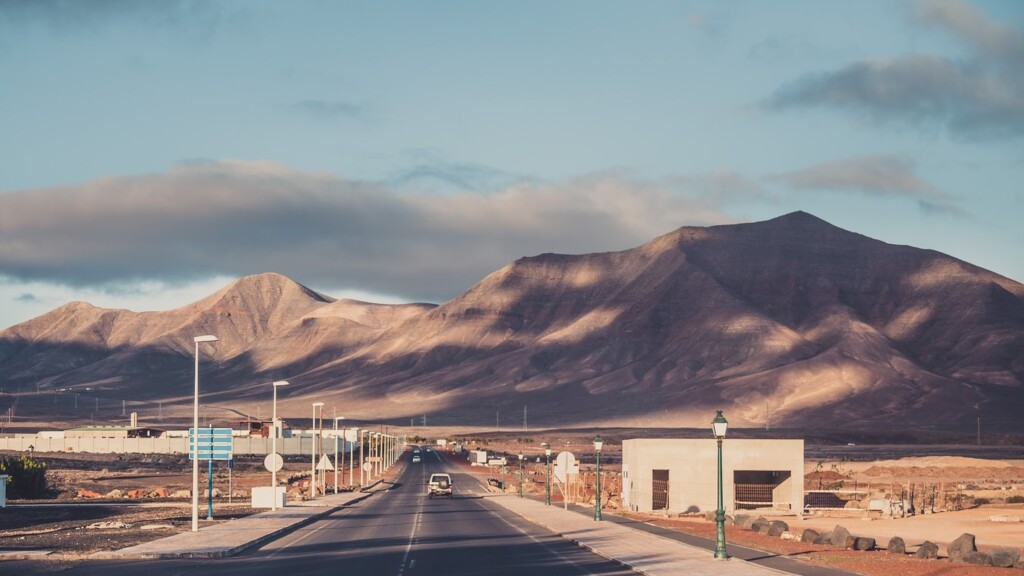
How to get to the Cactus Garden by car
To reach the Cactus Garden, drive towards Guatiza, which is 5 miles from Arrieta, 6 miles from Teguise, and 8 miles from Costa Teguise —these being the nearest towns. Nevertheless, it is very well connected to other significant tourist destinations on the island via the LZ-1 highway, ensuring a hassle-free journey. If you’re interested, there are other intriguing attractions in the vicinity, but I’ll provide details on those later.
How to get to the Cactus Garden by bus
If you prefer not to drive, you can use public transportation to reach the Jardín de Cactus. There are three different bus lines available, depending on the location of your accommodation in Lanzarote.
Line 7 connects Arrecife with Arrieta, while Line 9 travels from Arrecife to Órzola. Alternatively, you can choose Line 26, which runs from Arrecife to the town of Ye. To give you an idea, the journey from Arrecife to the Jardin de Cactus takes about 30 minutes.
If you want to get to the Cactus Garden by bus, make sure to check schedules, stops, and fares on the Interbus website.
Excursion to the Cactus Garden in Lanzarote
If using public transport seems too challenging, you can book one of the best excursions in Lanzarote. This way, you can set aside the logistical details and focus on enjoying your journey, as your guide will handle every aspect of the trip. Furthermore, these tours often include visits to other noteworthy attractions on the island, which is a great opportunity to explore it in greater depth.
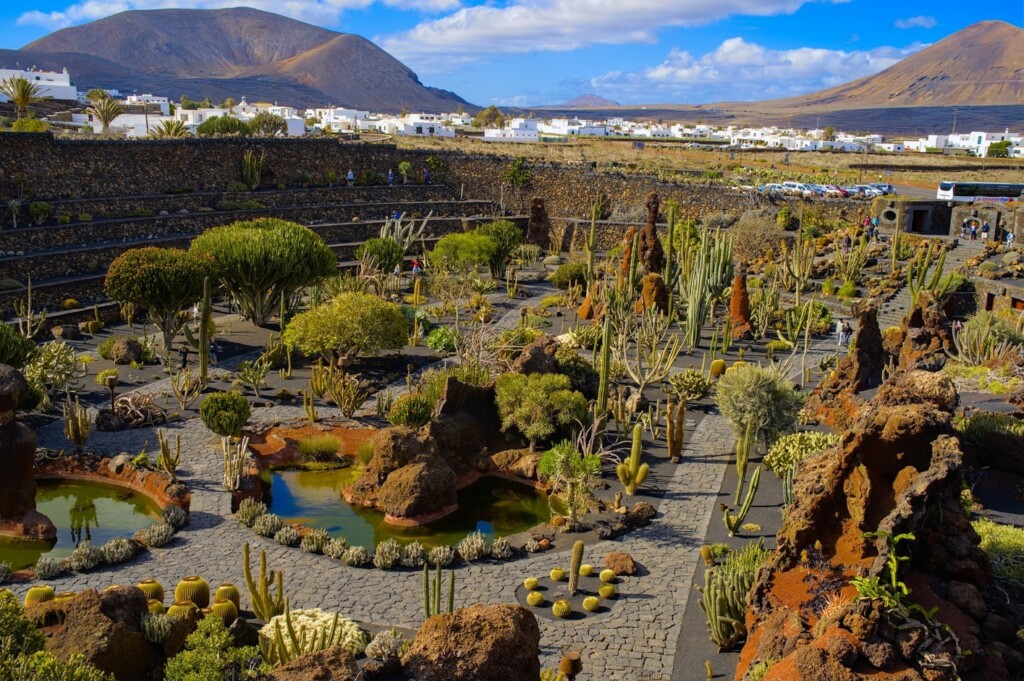
Excursion to the Cactus Garden in Lanzarote
I highly recommend this full-day tour to learn about Cesar Manrique’s works in Lanzarote. This excursion not only includes a visit to the Jardin de Cactus but also takes you to three other Art, Tourism, and Culture Centers of Lanzarote. These include the Monument to the Peasant, the Mirador del Río, and a choice between the Jameos del Agua or the Cueva de Los Verdes. To cap off the day, you’ll make a stop at the Cesar Manrique Foundation, where, in addition to gaining insightful information about his life and work, you’ll have the chance to visit one of the artist’s former homes.
Alternatively, if you only have a couple of days to explore the island, consider this excursion. It focuses solely on visits to the Cesar Manrique Foundation and the Cactus Garden, leaving you with enough time to continue exploring other attractions in Lanzarote.
Best hotels near the Cactus Garden
If you don’t know where to stay in Lanzarote, fear not! There are plenty of accommodation options near the Jardín de Cactus. Staying close to this popular tourist attraction allows you to arrive early and thoroughly enjoy it with fewer crowds.
Here are a few suggestions you can check out:
- Guatiza: This is where the Cactus Garden is located. You can check out Casa Salinas del Mar, an excellent hotel offering 1 or 2-bedroom apartments with a living room and fully equipped kitchen.
- Teguise: Teguise is the old capital of Lanzarote, where you can find emblematic buildings and a lively market. If you prefer more luxurious accommodations, you can opt for Palacio Ico Boutique Hotel, which is one of the best boutique hotels in Lanzarote. It is a traditional Canarian house from 1690 that has been completely renovated with elegant rooms and luxurious facilities. Alternatively, if you want to travel cheaply, B&B La Mimosa provides sophisticated rooms and includes breakfast.
- Arrieta: Arrieta is another charming town where you can enjoy delicious local cuisine. If you decide to stay here, I recommend El Charcón Apartments. They rank among the best apartments in Lanzarote, featuring well-equipped kitchens, balconies, and stunning sea views to ensure a cozy and scenic stay.
- Tabayesco: This is another picturesque town where you can truly appreciate the Canarian heritage at Eco Village Finca de Arrieta, a charming rural house. This hotel is located just 1,000 feet from the beach, offering rooms with a terrace and private bathroom, along with facilities like a barbecue area and a ping pong table.
- Costa Teguise: This is one of the most important tourist hubs on the island. Here, you can opt for Paradisus Meliá Salinas, one of the best hotels in Costa Teguise with a lush garden designed by Cesar Manrique, luxurious rooms, and several on-site restaurants. If you are looking for a more affordable option in Costa Teguise, I recommend Barceló Lanzarote Active Resort, which provides a comprehensive all-inclusive package and comfortable, spacious rooms.
Best things to do near the Lanzarote Cactus Garden
The area surrounding the Jardin de Cactus in Lanzarote is full of captivating attractions, providing an opportunity to explore more of the island’s landscapes before or after your visit. Whether you choose to explore in the morning or afternoon, there’s always extra time to discover these nearby gems.
Here are my recommendations on what to see near the Cactus Garden:
Jameos del Agua
Jameos del Agua is arguably the most visited attraction on the island, alongside the Cueva de los Verdes, which I’ll describe below. This remarkable creation by Cesar Manrique is situated inside a volcanic tunnel that dates back millions of years. The site is also home to a unique species of crab, making it a must-see destination.

Jameos del Agua
The natural beauty of Jameos del Agua was formed through one of the many eruptions of the La Corona volcano, one of the most significant volcanoes in Lanzarote, resulting in a sea of solidified lava that covered the entire northern part of the island. Over time, seawater seeped in and created an inland lake. You can also explore the on-site restaurant, museum, and the famous auditorium, where concerts and other events take place.
Cueva de los Verdes
The Cueva de los Verdes, or Green Cave, offers a guided tour along a series of trails inside a volcanic tube of the La Corona volcano, the same one connecting with Jameos del Agua. This guided tour is one of the best things to do on the island, and it takes place just a 10-minute drive from the Cactus Garden.
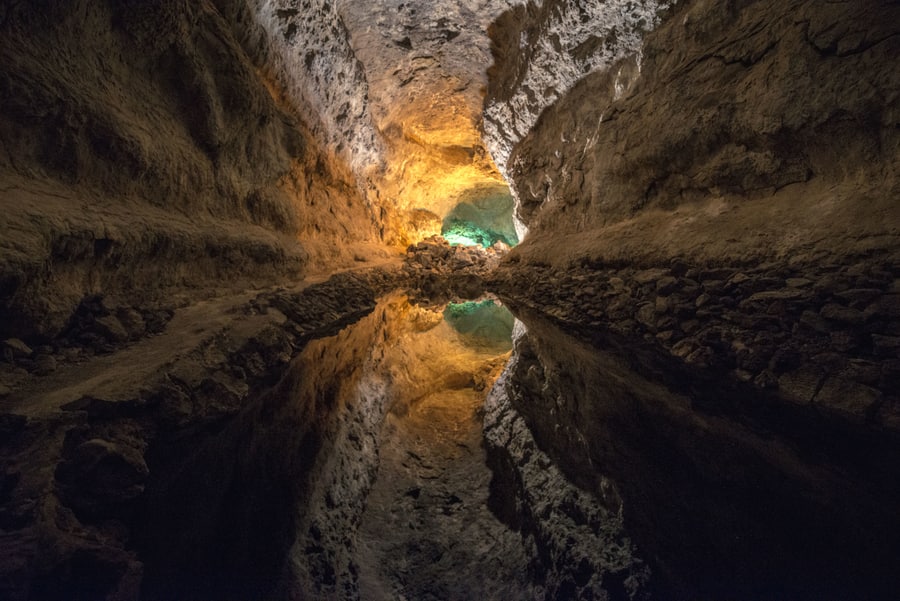
Cueva de los Verdes
The experience of being in the Cueva de los Verdes is truly unique. You’ll have the opportunity to appreciate various artistic interventions that enhance the cave’s natural beauty. Additionally, the guided tour provides a chance to learn interesting facts about the geological formation of the cave and hear legends associated with it. One such legend suggests that in the 17th century, inhabitants of Lanzarote sought refuge in the cave to escape pirate attacks.
Cesar Manrique House Museum
After exploring numerous works by Cesar Manrique, you might be curious to learn about the artist’s life. The Cesar Manrique House Museum, also known as “Casa del Palmeral,” is the residence where the Canarian artist spent the last years of his life. During a tour inside, you can explore various exhibitions showcasing personal objects, works of art, and unique crafts.
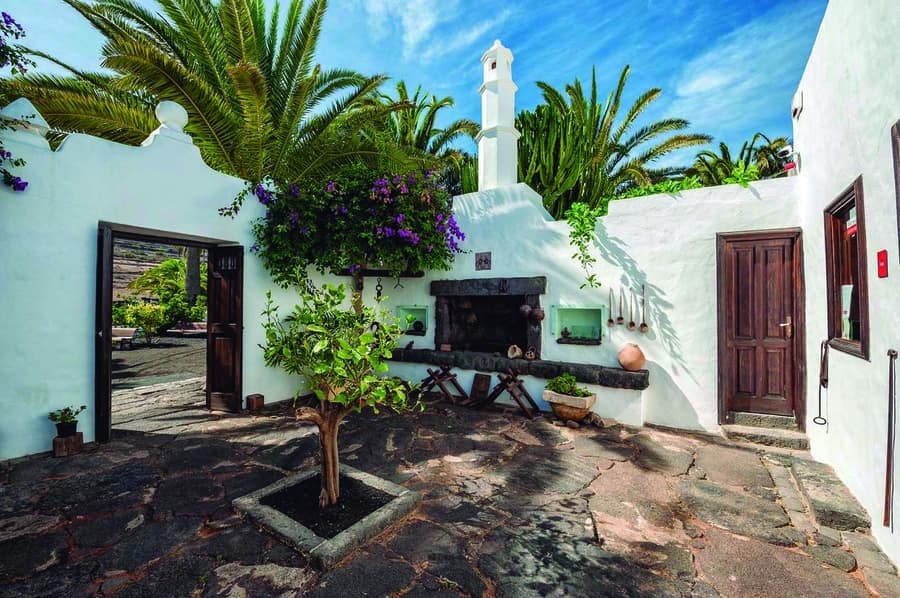
Cesar Manrique House Museum
Originally, this architectural gem had a very different appearance—it was initially a dilapidated house situated within an abandoned agricultural estate. When Manrique discovered it, he envisioned it as the perfect place to create his refuge, and he transformed it into this remarkable work of art through his creative vision and talent.
El Coloseo natural pool
El Coloseo is one of the natural pools in Lanzarote where you can relax in a quiet environment. Unlike some of Lanzarote’s beaches, which have strong waves, this natural pool provides a serene setting for swimming without concerns, allowing visitors to enjoy the beauty of the wild natural surroundings. Plus, it is situated adjacent to the Charco de Palo natural pool, so you have the opportunity to combine your visit and explore both attractions.
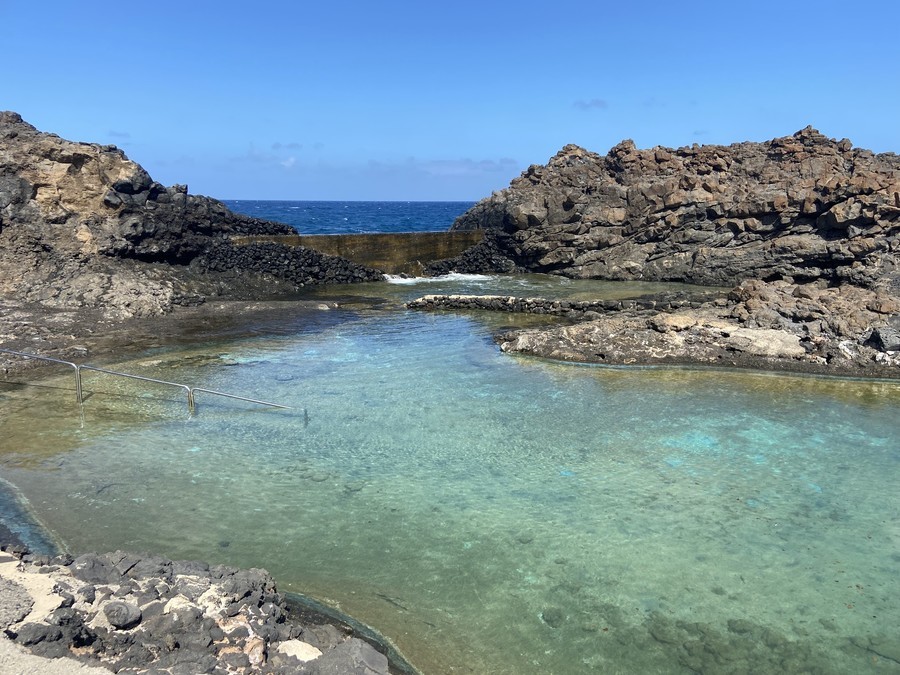
El Coloseo natural pool
In my opinion, the various hues of its rocky surface and its white sand contribute to the heavenly ambiance of El Coloseo. There is also an area where you can leave your belongings and bask in the sun with peace of mind. Additionally, there’s a volleyball court available, offering a space to have some fun, whether with family or friends.
Costa Teguise
In Costa Teguise, you’ll discover a diverse array of cuisine and accommodation options, making it an ideal destination for visitors of all interests. Whether you’re traveling with children or seeking vibrant nightlife activities, Costa Teguise has something to offer year-round.

Costa Teguise
For beach enthusiasts, the beaches in Costa Teguise boast some of the most beautiful coastal spots on the island where you can enjoy a day by the sea. Among the most renowned are Las Cucharas Beach and Jablillo Beach, known for their fine golden sand and tranquil waters. Additionally, water sports enthusiasts can partake in activities such as windsurfing or exploring the vibrant seabed through scuba diving or snorkeling.
Villa Teguise
Villa Teguise is another picturesque place on the island and one of the most beautiful towns in Spain, so I highly recommend spending some time exploring its attractions. Consider joining this private tour (in Spanish) to delve into its history while admiring the charm of its iconic buildings, including the Town Hall, the Convent of Santo Domingo, and the Palacio del Marqués de Herrera y Rojas. Alternatively, you can wander through its narrow streets at your own pace.
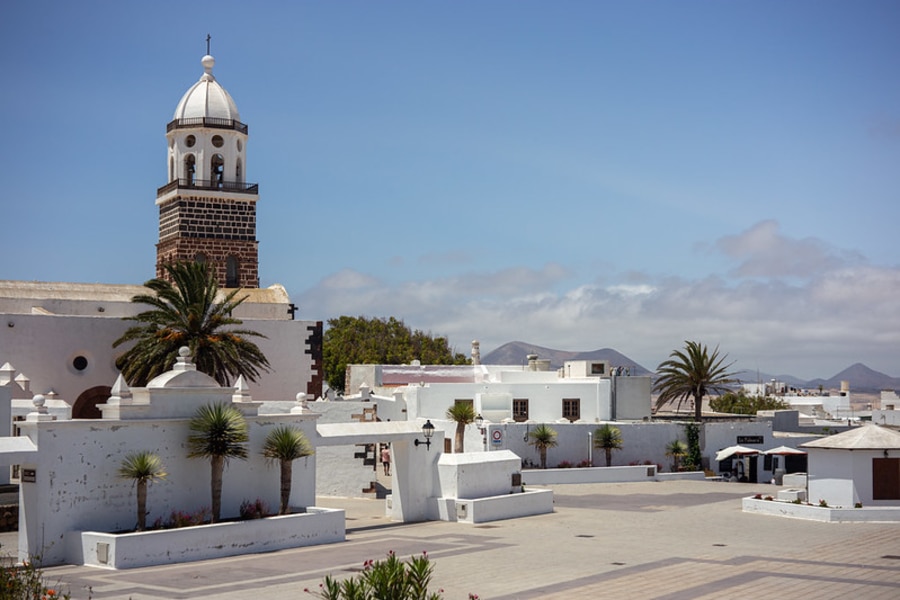
Villa Teguise
This town offers a delightful setting to stop at some of the best restaurants in Teguise and recharge your batteries. With numerous options to savor authentic Canarian cuisine, it’s an opportunity worth seizing. Don’t miss the chance to visit the local market and discover the famous “bride and groom of El Mojón,” a traditional folk-art figurine that represents a couple in traditional Canarian attire.
Tips for visiting Cesar Manrique’s Jardín de Cactus
Now, here are some useful tips to help you enjoy your visit to the Lanzarote Cactus Garden:
- Wear comfortable shoes for walking on the garden’s paths, some of which are slippery due to volcanic stone.
- Use sunscreen and wear a hat, especially in summer and for outdoor activities.
- The Jardin de Cactus is open year-round, so you can visit whenever you’d like.
- Plan to spend about one hour at the Cactus Garden. Of course, if you want to take photographs or stop by the on-site restaurant, you’ll need more time.
- Don’t forget to bring your camera.
- Remember that you can leave your car in the free parking lot at the entrance.
- The center of the garden is accessible to people with reduced mobility.
FAQs – Cactus Garden in Lanzarote
Now, let’s answer some of the most frequently asked questions about the Jardín de Cactus in Lanzarote:
And that concludes our guide on the Jardin de Cactus in Lanzarote. I suggest checking our tourist map of Lanzarote for detailed locations of the best places around the island. Besides, I recommend visiting the Cactus Garden in the morning, so you can spend your afternoon however you’d like.
If you have questions or wish to share your experience, feel free to leave a comment below.
Enjoy your time in Lanzarote!

